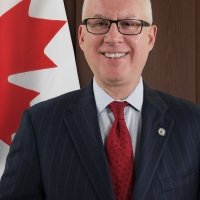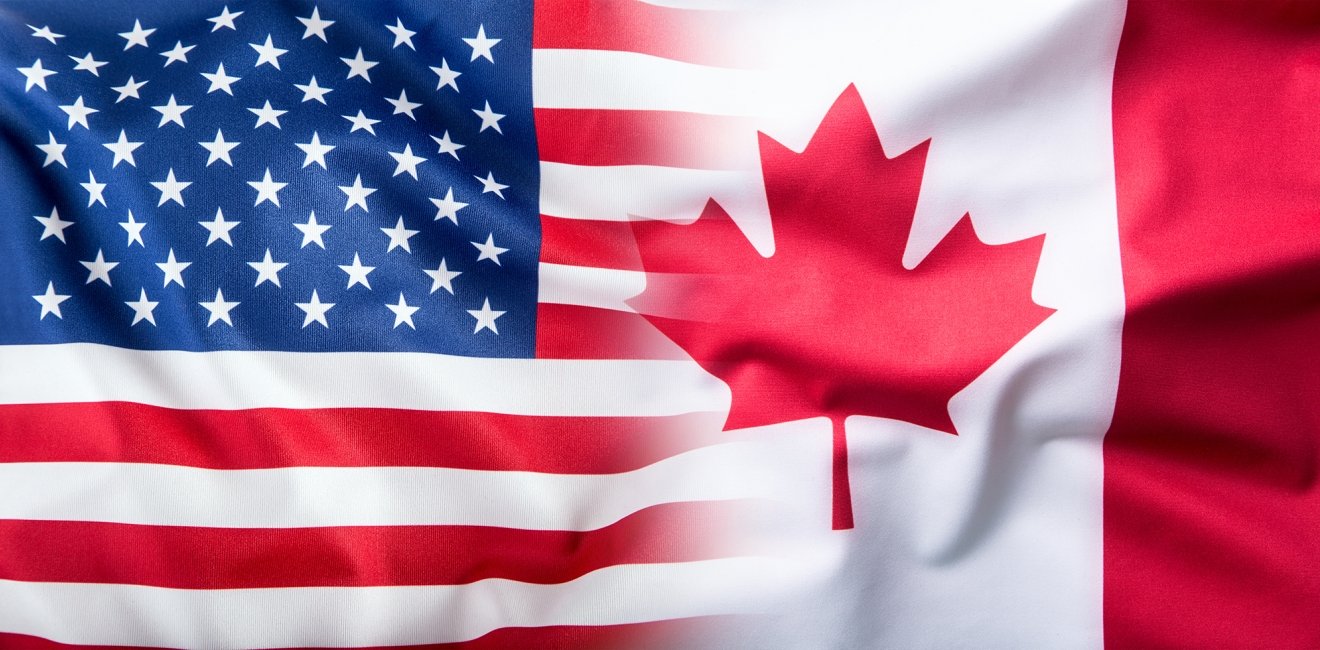Allan Gotlieb was among Canada’s most ‘analytical’ Ambassadors to the USA. He was supremely realistic – and highly pragmatic. He likely was more ‘calculating’ than any of is predecessors. I say all of this approvingly!
Historically, foreign embassies in D.C. focussed on the Administration – with the State Department being their primary entry point. They understood they were supposed to interact with the US government that way; the American ‘system’ encouraged – and expected – foreign governments to act, well, like foreigners.
But Canada indulged the notion of a ‘special relationship’ with the USA. It was assumed (hoped?) that the ‘special relationship’ would yield the outcomes that Canada desired. President Nixon, in a speech to a Joint Session of the Canadian Parliament in June, 1972, explicitly pronounced the ‘special relationship’ “dead.” Still, it took years for Canada’s official expectations adjusted to this new reality. Marcel Cadieux, Jake Warren, and Peter Towe, distinguished and highly qualified Ambassadors all, represented Canada in Washington from the time of Nixon’s declaration until Allan Gotlieb arrived. All were ‘traditionalists’; none ‘broke the mould’
Gotlieb seemed instinctively to understand both the ‘perviousness’ of the US system and the distributed nature of decision-making and influencing. The First Amendment to the US Constitution guarantees the right of Americans to “petition the government”. Americans. Not foreigners. But there were – and are – many Americans, certainly in the business community but also in the environmental advocacy movement, in think tanks dealing with issues of nuclear disarmament and world peace, all issue areas really, who identify with Canada’s views at given times. They are natural ‘targets’ for the Canadian Embassy and Canadian Consulates. Under Allan Gotlieb’s direction, Canada’s assets in the USA started to ‘lobby’ all potential allies. Canadian diplomats became ‘lobbyists’ – in full recognition that the US system relies on competing lobbies to illuminate options and help broker solutions. It can be an honourable thing to be a ‘lobbyist’ in the US system – particularly since, as diplomats representing foreign countries, you’re forbidden from feeding the eternal US election cycle’s vast appetite for cash!
Just as importantly, Gotlieb understood the institutional role of Congress in shaping (and funding) policy decisions that could be important to Canadian interests. Canada had always paid a modicum of attention to border state Representatives and Senators, to the Congressional leadership, and to the Chairs and Ranking Members on certain committees. Gotlieb transformed the Embassy’s approach; as a high – and ongoing – priority, Canada would target all of Congress. Methodically. Perpetually. We would inform ourselves sufficiently to understand what were the optimum ‘links’ to all Members of Congress (i.e. those that would create greatest Canadian ‘resonance’ with them personally and with their states or districts). He (and we) would press the Canadian business community, in particular, to identify their key American customers and suppliers – whom we, in turn, would ‘catalogue’ and target. In the decades after Gotlieb other data sources would also be accessed. Maps detailing the number of jobs in a district or state dependent on trade or investment with Canada would be prepared and unfolded in front of the elected official, allowing them to marvel at just how important Canada was to their jurisdiction. Ultimately, these became ‘electronic’: Canadian diplomats were equipped with large amounts of relevant (and resonant) information loaded onto Ipads; in a highly interactive fashion, they could provide Members of Congress and staff with granular detail, showcasing down to the community level how many constituents owed their livelihood to trade/investment with Canada.
In the 1980s, Gotlieb couldn’t have imagined the technological advances that would empower our outreach going forward. But he definitely inspired the thinking that underpinned this approach to advocacy. Successor Ambassadors (I worked during my two Embassy assignments for Ambassadors Burney, de Chastelain, Chrétien, Wilson and Doer) and their staff honed and refined this vision. Canada has become one of the most successful advocates to Congress as a result; our relationships – and so our ‘stories’ – are the richest. If emulation is the sincerest form of flattery, it might even be said that Gotlieb provoked fundamental changes to the ways in which all major foreign governments with representation in the US interact with policymakers and influencers. Other governments initially envied Canada’s approaches to advocacy. Then they imitated us. Some (Mexico might be the best example) have even overtaken us in some respects. Fundamentally, no ‘serious’ country any longer contents itself simply with making a démarche to the State Department. Advocating a country’s interests in the US is now seen as a serious and sophisticated business. Allan Gotlieb played a large role in provoking that evolution.
He understood, for example, that often it’s Representatives, Senators, Governors, State Legislators from states not contiguous with Canada who are the most impressionable. Usually, they are the most surprised by the extent of the ‘Canada connection’. As Gotlieb astutely observed, legislators from places closest to Canada frequently were most skeptical of Canada’s asks. Take Montana as an example. In the Washington Diaries, Gotlieb said of MT Senator Max Baucus “he doesn’t seem to like Canadians too much.” The ascribed reasons: producers in Montana grow, raise, mine or log many of the same things that Canadians in south-eastern BC, southern Alberta, or southern Saskatchewan grow, raise, mine or log. To be sure, there’s natural cross-border understanding as a result. But there’s also commercial competition. Ambassador Gotlieb figured we needed to comprehend that picture in all of its complexity rather than simply assume that Senator Baucus would be our ‘friend’ just because Montana had a 545-mile-long border with Canada.
While Allan Gotlieb conceived the fundamentals of advocacy in ways that none of his predecessors ha, techniques can take a country only so far. He was appointed by Prime Minister Trudeau. His first three years in the USA coincided with Pierre Trudeau’s last three as PM. During none of those years did the principals – the US President and the Canadian Prime Minister – enjoy a particularly good relationship (in the Washington Diaries Gotlieb laments behaviours by Trudeau that he felt were counterproductive to advancing Canadian interests with the Reagan Administration). Ambassadors exist, in part, to overcome such challenges. And Gotlieb did his best. Perhaps unsurprisingly, there were no major accomplishments in the relationship during that time. The Trudeau Government proposed Sectoral Free Trade Agreements with the US; those went nowhere. The US initiated measures against Canada’s softwood lumber industry – a horror story for Canada that endures to this day. Had Gotlieb’s assignment to Washington ended with the Liberal government’s defeat in 1984, his advocacy innovations likely would have been forgotten.
Against all odds – and against Ambassador Gotlieb’s own expectations – Prime Minister Mulroney and Foreign Minister Clark retained him in Washington for the next five years. And it was during those five years (1984-1989) that Allan Gotlieb was able to add great value. He had the benefit of three years of ‘learning’ under his belt. But more important, the relationship between principals had changed 180 degrees. President Reagan, Vice-President Bush, and Prime Minister Mulroney got on famously. So did George Shultz and Joe Clark, James Baker and Michael Wilson, and other counterparts in the respective administrations
It was the fact of these relationships, I would argue, that made it possible for Ambassador Gotlieb to work so much of his magic in advancing the goal of a US-Canada free trade agreement. There’s a vast literature detailing how close-run a thing it was to secure Administration and Congressional buy-in at every important step along the way. Gotlieb himself argued that “Canada cannot prevail in Congress over the opposition of the Administration.” I know from personal experience that there have been exceptions to that maxim: delaying implementation of the Western Hemisphere Travel Initiative – the passport requirement – in 2007 definitely is one; changes secured to CUSMA/USMCA after Canada worked closely with Congress in 2018-19 is likely another. But his principle and my argument are mutually reinforcing in this case: even Allan Gotlieb, master of public diplomacy, could not have gotten a free trade agreement in his final years as Ambassador had the US Administration not been favourably disposed. The Mulroney government assiduously cultivated its counterparts in the US – to great effect. As a general rule, Ambassador Gotlieb was fully in the loop – in other words, he either recommended that particular calls be made (and provided critical briefing material) or was fully debriefed after the calls were concluded. It was one of the most remarkable periods of coordination between government in Ottawa and Embassy in Washington that Canadian diplomacy has ever seen.
A caution: even excellent relationships at the top sometimes aren’t enough. PM Mulroney was passionately committed to reaching an arrangement with the USA whereby emissions of sulphur dioxide in the US mid-west and in central Canada would be significantly reduced – thereby permitting lakes in both countries to recover from ‘acidification’ (with their fish stocks, in many cases, having been totally wiped out). Gotlieb worked on the file for years without success. By most accounts, President Reagan simply didn’t believe ‘the science’. Thankfully, the Mulroney-President GHW Bush relationship was every bit as strong as the one between Mulroney and Reagan. Perhaps because he was able to observe the effects of acid rain on Maine lakes (the President summered on the Maine coast – periodically hosting Mulroney there), Bush saw ‘the science’ up close. Gotlieb’s successor, Derek Burney, was able to bring an Acid Rain Accord to fruition; it was signed in March, 1991.
Ambassador Gotlieb, very much in partnership with his wife Sondra, is credited with having put Canada ‘on the social map’ in DC. Of course, he wasn’t the first to host dinner parties at the Canadian residence. His Canadian predecessors did so; indeed, all Ambassadors representing ‘major’ countries (i.e. G7 and others) in Washington did the same. What Gotlieb did was to lift Canada’s ambition. We had been modest and traditional. He thought Canada should make a splash – consistent with our status as the USA’s biggest trading partner and occupier of the geography most important to US security interests. And so, he and Sondra strove to attract American ‘celebrities’ to their Residence. As he put it “the first rule of Washington entertainment is that it takes an American to catch an American.”
And so, Embassy events under the Gotliebs became known in DC circles as “A List” attractions; accept an invitation from Allan and Sondra Gotlieb and you would meet interesting people. Members of the Administration and Members of Congress would come; many were innately interested; some came because their spouse was very keen to attend. Ambassador Gotlieb never got to use our fantastic, very ‘un-Canadian’ Chancery at 501 Pennsylvania Ave. NW – although he was instrumental in bringing it into existence. Successor Ambassadors, beginning with Derek (and Joan) Burney, used the facility to spectacular advantage. Its proximity to Congress attracted Senators and Representatives who relished the opportunity to “look upon themselves” from D.C.’s best vantage point – with confidence that they could get back to the Chamber in time for a vote (which they couldn’t reliably do from any other foreign Chancery or Residence in the city).
The new Chancery’s large spaces allowed successor Ambassadors to realize another Gotlieb vision: ‘Canada as convenor’. Ambassador Gotlieb understood the value of the Canadian ‘brand’. We’re generally respected. For the most part, we’re perceived as non-threatening (benign?). The Cold War was still underway, so there were countries that the US Administration, legislators, lobbyists, and influencers simply couldn’t be seen to associate with. During his tenure, much of the American intelligentsia was gripped by a fear that Japan was about to overtake the USA economically. Germany was still two countries; although Chancellor Kohl was personally popular with the Reagan Administration, suspicions of Germany still ran high. There was no Reagan chemistry with France’s Socialist President Mitterrand and Italy’s Socialist PM Craxi. The list of G7 countries America strongly identified with at the time was relatively short (during the Reagan Administration it largely reduced to Thatcher’s Britain and Mulroney’s Canada).
Influencers and lobbyists understood that; they were delighted to collaborate with us when their interests and ours corresponded. Because our reputation often exceeded theirs’, the opportunity to associate with Canada on a project was a real ‘plus’. Heavy hitters from the Administration (including Cabinet Secretaries), from Congress (including Chairs and Ranking Members of the committees key to authorizing the launch of negotiations and then blessing the product), from the business, legal, think tank, academic and NGO communities – all found it attractive to pitch-up at a Canada-hosted event, knowing they might gain or trade useful insights with other attendees. This was a heady time; bear in mind that the FTA with Canada was the first one the US had ever negotiated. Canadian Ministers and negotiators were in D.C. all the time! Ambassador Gotlieb’s choreography helped make this hyper-engagement a work of art!
Allan and Sondra Gotlieb’s creativity as social convenors is often held up as an example of what Canadian Ambassadors must do if they wish to be effective. In fairness to his successors, the times have changed. Dramatically, I would argue. Elected officials now spend vastly more time fundraising than they did in the 1980s; sometimes they’ll have 2 or 3 fundraisers each weekday evening (making it harder for them to contemplate a leisurely dinner at the Canadian Ambassador’s table). There are limits in place today that didn’t exist when Gotlieb was Ambassador on the ‘value’ of hospitality that elected and appointed officials can accept. Also, subsequent Canadian governments became more parsimonious in the hospitality budgets they allocate to Canada’s missions abroad. ‘Sports diplomacy’ (for example, convening A-list players in a box at a Washington Capitals game – where they were a captive audience for three hours – a tool touted by Gotlieb in the Washington Diaries) was disallowed by the Stephen Harper and Justin Trudeau governments. Still, successor Ambassadors, Ministers, and Consuls General have become increasingly creative in ‘partnering’ with those who share the Government of Canada’s ‘objective of the day’ to share the cost of hospitality events (the partners ranging from US business, labor, legal or other organizations and associations to Canadian businesses or provinces and territories). And we’re still able to draw heavy hitters to the events we organize (fewer dinners, but more receptions); ‘A listers’ make cameo appearances.
Allan Gotlieb is appropriately heralded to this day for the durability of the advocacy transformations he wrought. It bears emphasizing that the importance of the US relationship was no more or less ‘cosmic’ to Canada after his eight years in DC than it had been prior to his arrival in Washington. What was different was how we thought about pursuing our interests. His gimlet-eyed analysis that “in Washington D.C. Canada is just another special interest – and not a very special interest at that” necessitated a fundamental rethink of how Canada should maximize its natural advantages (and compensate for its weaknesses). Since his Ambassadorship, every serving officer at the Canadian Embassy or at one of our multiple Consulates across the US has understood that if we want something from Americans we had better be able to tell them, up-front and clearly, why it’s ‘good for them’. We’re much more focussed on the fact that every important goal requires a strategy for its realization. We no longer suffer the illusion that our essential virtue will allow us to prevail in the end – or that the alliances we’ve formed, whether with decision-makers or influencers, are ‘permanent’. Instead, channelling Allan Gotlieb, we are now more transactional and much more realistic in our ambitions. In other words, we’ve matured and we’ve grown. Which is precisely what Allan Gotlieb felt we had to do!
Roy Norton, Ph.D. (Global Fellow, Canada Institute, Woodrow Wilson Center for Scholars; currently Diplomat-in-Residence, Balsillie School of International Affairs, Waterloo, Ontario). Norton had four Canadian diplomatic assignments in the USA: First Secretary – Economic, 1990-94; Minister – Congressional & Public Affairs, 2006-10; Consul General at Detroit, 2010-14; Consul General at Chicago, 2014-16
Author

Fellow, Balsillie School of International Affairs/Adjunct Assistant Professor, University of Waterloo

Canada Institute
The mission of the Wilson Center's Canada Institute is to raise the level of knowledge of Canada in the United States, particularly within the Washington, DC policy community. Research projects, initiatives, podcasts, and publications cover contemporary Canada, US-Canadian relations, North American political economy, and Canada's global role as it intersects with US national interests. Read more





